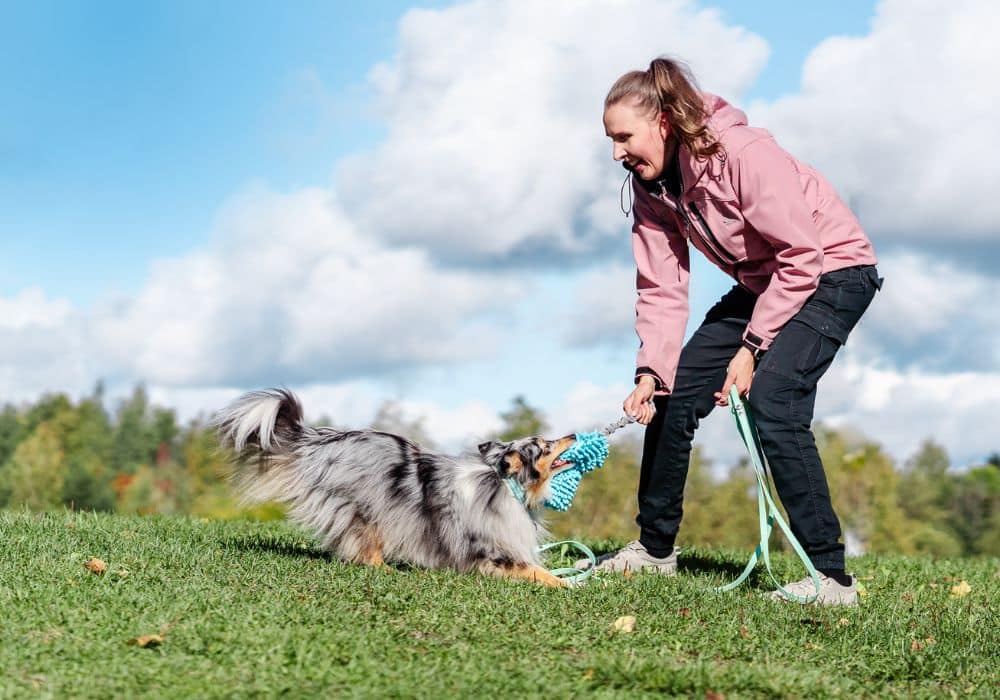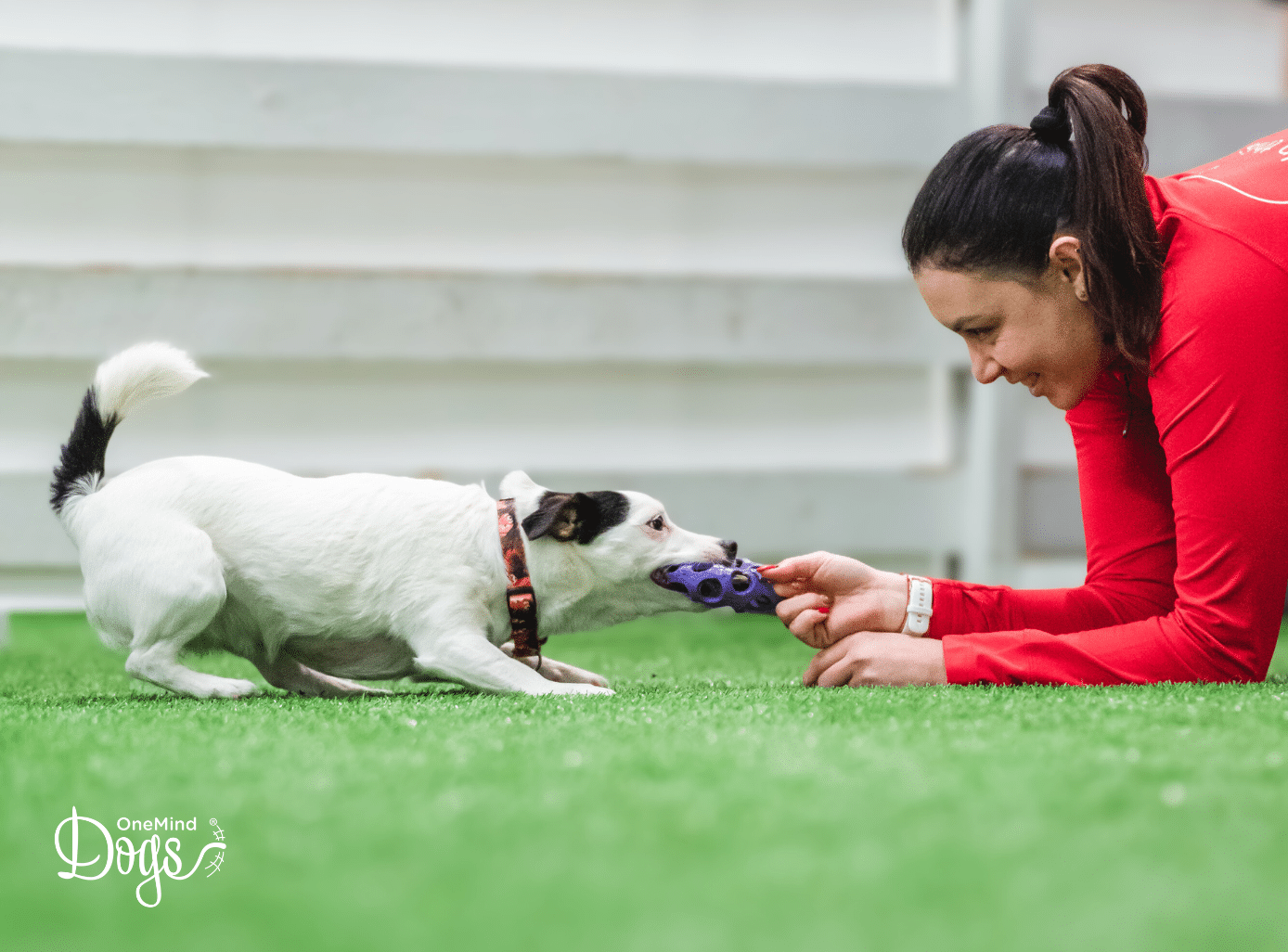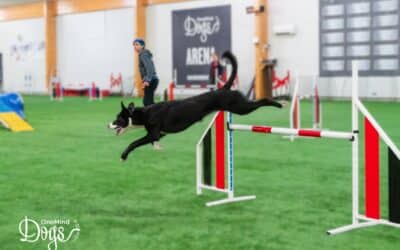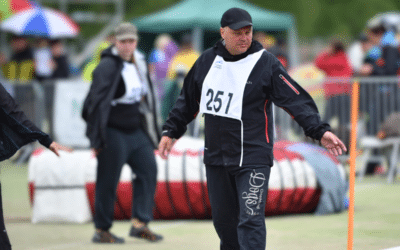Ever had that moment at the start line where your dog seems more interested in sniffing than running? Or maybe they just trot along the course without much enthusiasm, even though you know they can go faster? If you’re not sure how to build more drive and motivation in agility then you’re definitely not alone.
A lot of agility competitors struggle with how to get their dog more excited about the game. The good news is, you don’t have to settle for a low-energy performance. Whether you’re just starting out or you’ve been trialing for years, there are simple, effective ways to build drive and motivation in dog agility. And no, it doesn’t involve magic or forcing your dog to be someone they’re not.
In this blog, we’re breaking down some of the biggest lessons from a free 40-minute webinar by OneMind Dogs Coach Niki Drage. It’s packed with practical ideas for creating a dog that wants to run with you.
Start by understanding who your dog really is
Before you try to “fix” motivation, take a step back and really observe your dog.
Ask yourself:
- Do they naturally choose to move fast when outdoors?
- Are they the chaser or the one being chased?
- What do they do when no one’s around to entertain them?
- Do they dig, zoom, sniff, toss toys, or just nap?
These little details tell you a lot about your dog’s natural tendencies. Some dogs are excitable by default, while others are more low-key. That doesn’t mean one is better than the other, but it does mean you’ll need different approaches depending on your dog’s style.
Also, make sure your dog is physically able to move comfortably. Tightness in the back or hips, even if subtle, can kill drive in a flash. If your dog avoids jumping or just seems “off,” it’s worth checking in with your vet or physio before changing anything in training.
Download a warm up and cool down guide with some extra tips on checking your dog here.
Find the reward that really matters
Not all rewards are created equal. Your dog might work for food, but that doesn’t mean it’s their favorite thing. The goal is to find something that gets them buzzing with excitement.
That could be:
- A certain squeaky toy
- A soft chewy treat
- The sound of a crinkly chip packet
- Swimming
- Herding other dogs (yep, really)
One of Niki’s dogs went from slow weaves to lightning fast ones by using her favorite reward: a run to the paddock to herd the other dogs. That single change tripled her weaving speed. Learn more in the webinar.
So get creative. Try different types of treats, toys, and games. Let your dog tell you what they love most.
If they don’t already love a tug toy, don’t force it. Use what already works and only introduce new rewards when it’s fun for both of you. Find out more about rewarding in this online training theme.

Drive and motivation in agility come from meeting your dog’s needs
Here’s something that often gets overlooked: if your dog can meet all their needs on their own, they don’t need you.
If your dog is free-fed, has constant access to toys, and plays all day with other dogs, then training with you doesn’t feel special.
Try this instead:
- Use meals as training rewards (ditch the bowl)
- Limit access to high-value toys when not training
- Be the one who initiates fun and games
When your dog realizes that food, play, and excitement all come from you, their motivation to work with you skyrockets. Sometimes it feels like a lot of work being involved in your dogs mealtimes through training or being the main source of their physical and mental exercise, but it pays off ten-fold. This is the secret to an engaged, excited agility teammate.
Keep your sessions short, sweet, and fun
Dogs don’t need 30-minute training marathons. In fact, they learn better with short bursts of focus.
Use a timer. Try 5 to 8 minutes per session, max. End before your dog checks out.
You can also count out 15 treats ahead of time and stop when you’re out. This keeps your training sharp and avoids that “one more time” trap that we’ve all fallen into.
Watch your energy too. If you’re tired, distracted, or frustrated, your dog will feel it. Take a break or just play instead.
Confidence builds drive and motivation in agility
A lot of “low drive” dogs are just unsure. They don’t know what’s coming next, so they hesitate. That’s where teaching skills comes in.
When your dog understands techniques like sends, obstacle focus, and commitment, they feel more in control. And that confidence fuels speed and motivation.
Use games like “offering the jump” to build operant learning. It helps your dog think independently and builds real understanding, not just reacting to your body every step of the way.
Dogs love routines and patterns. If they can predict what’s next, they’re more likely to move with confidence and joy.
Watch the video below to see the “offering the jump” game in action:
Use your handling to support motivation
Sometimes, handlers help too much. They wait at jumps, hover for too long, or delay their cues “just in case.” But this can backfire.
When dogs don’t know what’s coming, they slow down. When they get late or inconsistent cues, they start to doubt. And doubt kills drive.
Instead:
- Cue early (before takeoff)
- Keep moving through the course
- Stay connected with your dog
- Look at them, not the next obstacle
Movement is your dog’s most important handling element. If you stop moving, you stop communicating.
Try handling options that keep you in motion. For example, using a Japanese turn instead of a Whisky cross may keep the flow going. If you’re not familiar with these terms, don’t worry! OneMind Dogs can guide you through them step-by-step.
Build trust through timing and connection
Think of yourself as your dog’s GPS. If you give clear directions in time, they’ll speed up. If you give them late, or worse – conflicting, information, they’ll slow down or stop trusting you altogether.
Rhythm and trust are everything.
Here are a few quick tips:
- Jog in place while your dog is in a tunnel if you need to sync up
- Don’t take shortcuts that leave you stuck and motionless
- Reconnect quickly if connection breaks after a blind cross or tunnel
Watch videos of your own runs. If your dog starts sniffing or hesitating, check your head and shoulder position. You might have broken connection without even realizing it.
Not every dog is an agility champion, and that’s okay
At the end of the day, agility isn’t about being the fastest or the flashiest. It’s about enjoying the journey with your dog. Sharing something fun. Learning and growing together.
Your dog might never win a national title. But if they learn to love the game and run with confidence, that’s a win.
Sometimes it takes creativity. Sometimes it means letting go of how you think things “should” look. But the joy you’ll find when your dog wants to play with you? That’s what this sport is all about.
Want more on drive and motivation in agility?
Coach Niki Drage goes even deeper in the free 40-minute webinar on this topic. You’ll see real-life examples, get tips you can use today, and feel more motivated about your training journey.
🎥 Watch the full recording for free here: https://www.oneminddogs.com/free-agility-webinar-drive-and-motivation-in-agility-best-dog/



